Search Result
Results for "
Enzyme inhibition
" in MedChemExpress (MCE) Product Catalog:
1
Biochemical Assay Reagents
2
Isotope-Labeled Compounds
| Cat. No. |
Product Name |
Target |
Research Areas |
Chemical Structure |
-
- HY-107030
-
-

-
- HY-124781
-
|
|
Bacterial
Antibiotic
|
Infection
|
|
ML406 is a small molecule probe that shows anti-tubercular activity via M.tuberculosis BioA (DAPA synthase) enzyme inhibition with an IC50 of 30 nM. M.tuberculosis BioA is an enzyme involved in biotin biosynthesis in M.tuberculosis .
|
-
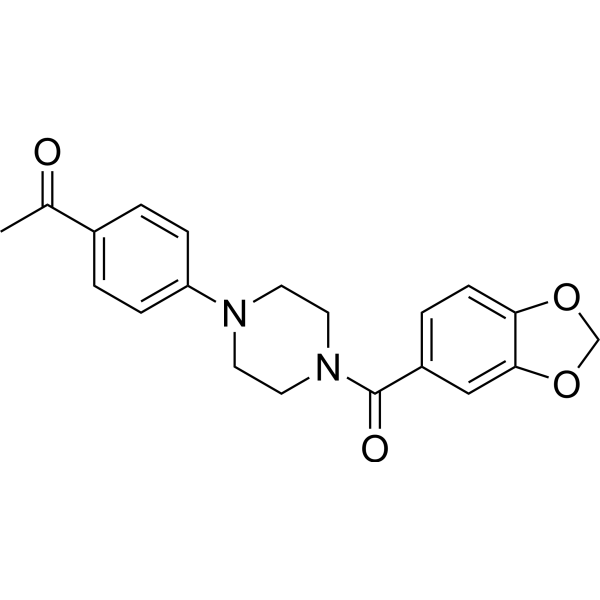
-
- HY-161514
-
|
|
Xanthine Oxidase
|
Metabolic Disease
|
|
Xanthine oxidase-IN-15 (Compound 6c) is a selective inhibitor of Xanthine oxidase (XO) (IC50=0.13 μM). Xanthine oxidase-IN-15 inhibits XO catalysis by forming a stable interaction with the active site of XO. Xanthine oxidase-IN-15 is mainly used in the study of hyperuricemia and gout .
|
-

-
- HY-163495
-
-

-
- HY-121328
-
|
S-2852F
|
Parasite
|
Infection
Neurological Disease
|
|
Empenthrin (S-2852F) is a synthetic pyrethroid. Empenthrin can be used in insecticides. Empenthrin shows a clear species-specificity in the inhibitory effect on the Pentobarbital (PTB)-metabolizing enzyme(s). Empenthrin prolongs PTB induced-sleeping time in mice through an inhibition of the PTB-metabolizing enzyme(s) in the liver, an effect that does not occur in rats. Empenthrin shows a clear species-specificity in the inhibitory effect on the PTB-metabolizing enzyme(s) .
|
-

-
- HY-133078
-
|
|
Others
|
Cancer
|
|
Thienyldecyl isothiocyanate is an analog of thienylbutyl isothiocyanate that, like many isothiocyanates, demonstrates antiproliferative activity against cancer cells presumably by modulation of xenobiotic-metabolizing enzymes, such as by inhibition of cytochrome P450, and/or by induction of phase II detoxifying enzymes.
|
-

-
- HY-B0580A
-
|
(-)-Ketorolac
|
COX
|
Inflammation/Immunology
|
|
(S)-Ketorolac is a nonsteroidal anti-inflammatory agent. (S)-ketorolac exhibits potent COX1 and COX2 enzyme inhibition .
|
-
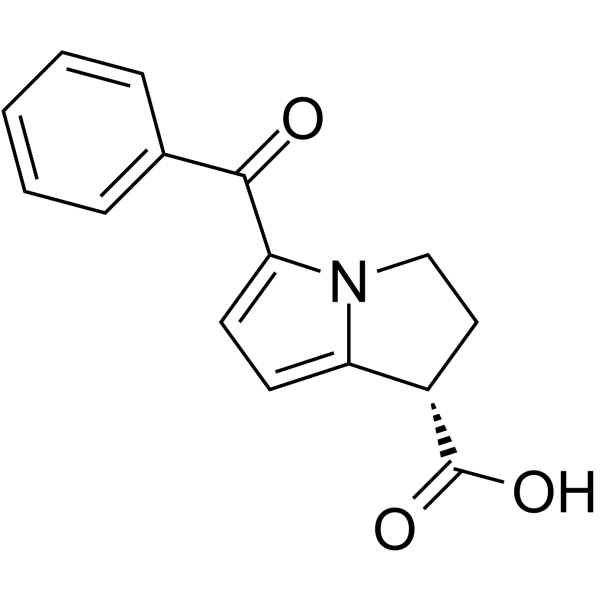
-
- HY-124334
-
|
|
Antibiotic
Bacterial
|
|
|
L-161240 is an antibiotic, which exhibits antibacterial activity against Escherichia coli, through inhibition of LpxC enzyme (Ki is 50 nM) .
|
-

-
- HY-N11780
-
|
|
HIV
|
Infection
|
|
Clavirolide L (Compound 3) is a dolabellane-type diterpenoid that can be isolated from Clavularia viridis. Clavirolide L shows significant inhibition against HIV-1 without RT enzyme inhibition and can be used for HIV infection research .
|
-
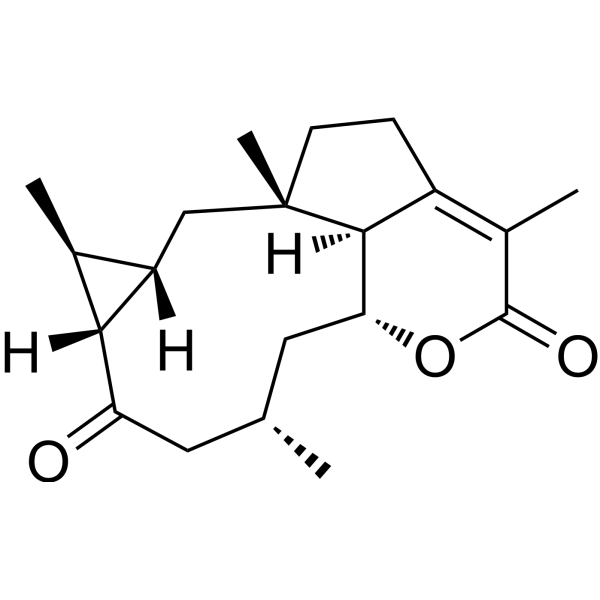
-
- HY-130199
-
|
Parellic acid
|
Others
|
Metabolic Disease
|
|
Psoromic acid is a potent and selective RabGGTase (Rab geranylgeranyl transferase) inhibitor with an IC50 value of 1.3 µM. Psoromic acid is an antioxidative agent. Psoromic acid exhibits a competitive type of HMGR inhibition and mixed type of ACE (angiotensin converting enzyme) inhibition .
|
-

-
- HY-N2074
-
|
|
Lipoxygenase
|
Inflammation/Immunology
|
|
Picrinine, an akuammiline alkaloid, is isolated from the leaves of Alstonia scholaris. Picrinine exhibits anti-inflammatory activity through inhibition of the 5-lipoxygenase enzyme .
|
-
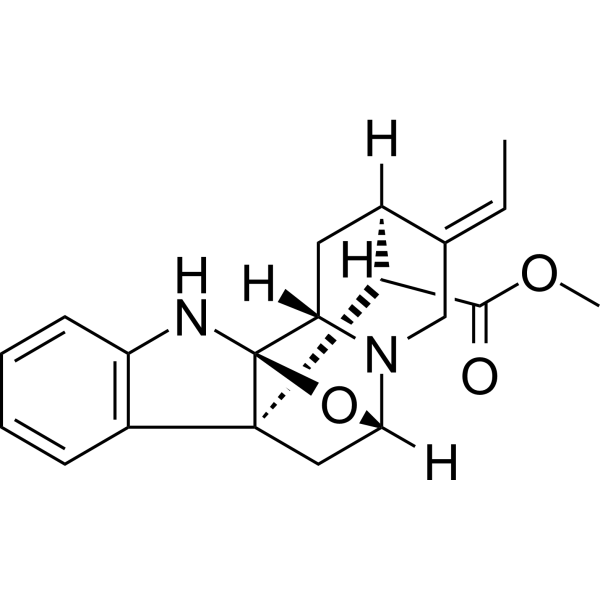
-
- HY-100796
-
|
Vatensol
|
Dopamine β-hydroxylase
|
Cardiovascular Disease
|
|
Guanoclor is an antihypertensive compound. Guanoclor is an adrenergic neurone-blocking agent, which also interferes with noradrenaline synthesis by inhibition of the enzyme dopamine beta-hydroxylase .
|
-
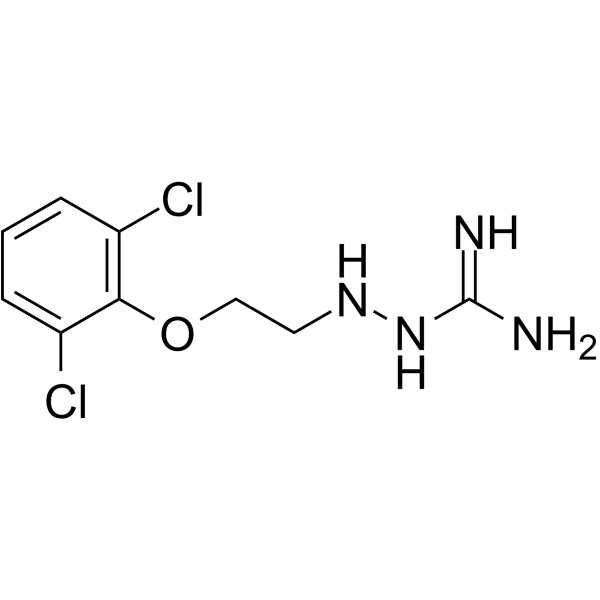
-
- HY-119737
-
|
|
Acetolactate Synthase (ALS)
|
Metabolic Disease
|
|
Chlorsulfuron blocks the biosynthesis of the amino acids valine and isoleucine in plants. Chlorsulfuron completely alleviates herbicide-induced growth inhibition. The site of action of Chlorsulfuron is the enzyme acetolactate synthase .
|
-
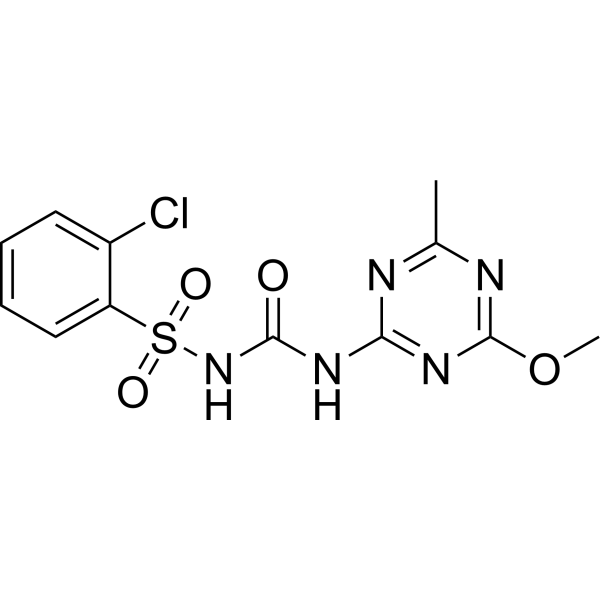
-
- HY-126404
-
-

-
- HY-147730
-
|
|
HDAC
|
Cancer
|
|
A variety of compounds were designed and synthesized by modifying cap groups. The enzyme inhibition test showed that compound 12C had broad-spectrum enzyme inhibitory activity, and compounds 9m and 9q were more inclined to inhibit HDAC6, showing a certain selective inhibitory activity among the representative subtypes.
|
-

-
- HY-148190
-
|
CGT-8012
|
Dipeptidyl Peptidase
|
Endocrinology
|
|
Sheng Gelieting (CGT-8012) is a dipeptidy peptidase-IV enzyme (DP-IV) inhibitor. Sheng Gelieting has great DP-IV inhibition activity with an IC50 value of 87 nM. Sheng Gelieting can be used for curing or preventing diseases relevant to the dipeptidy peptidase-IV enzyme, such as the diabetes, particularly the II-type diabete .
|
-
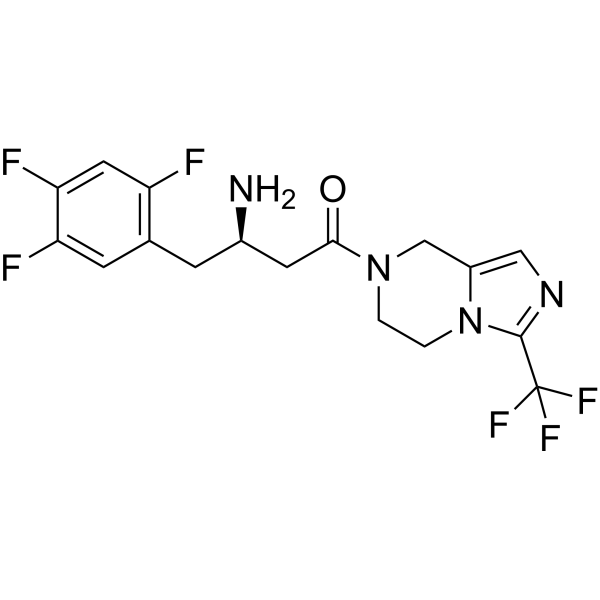
-
- HY-144717
-
|
|
Phosphatase
|
Metabolic Disease
|
|
PTP1B-IN-18 is an orally active complete mixed type protein tyrosine phosphatase 1B (PTP1B) inhibitor with a Ki of 35.2 μM. PTP1B-IN-18 can be used for type 2 diabetes research .
|
-
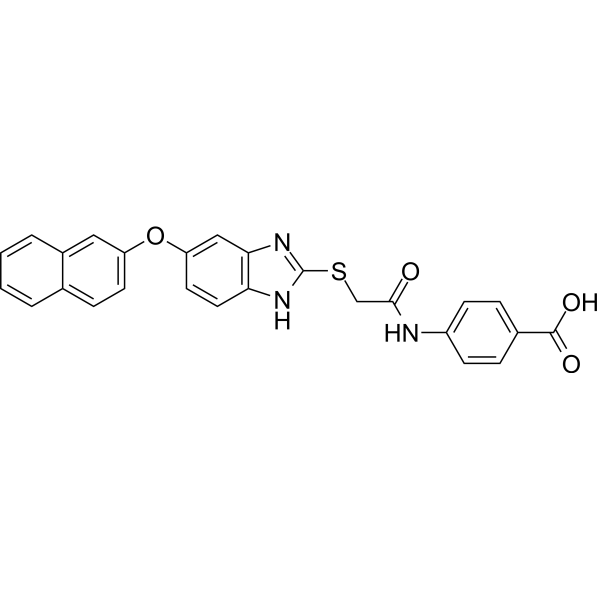
-
- HY-112179
-
|
|
Others
|
Inflammation/Immunology
|
|
GSK180 is a selective, competitive, and potent inhibitor of kynurenine-3-monooxygenase (KMO), a key enzyme of tryptophan metabolism (IC50, ~6 nM), but shows negligible activity against other enzymes on the tryptophan pathway. GSK180 rapidly changes levels of kynurenine pathway metabolites, and acts as a useful tool to probe the therapeutic potential of KMO inhibition .
|
-

-
- HY-76200S
-
|
UK-109496-d3
|
Fungal
|
Infection
|
|
Voriconazole-d3 is the deuterium labeled Voriconazole. Voriconazole (UK-109496) is a second-generation, broad-spectrum triazole antifungal agent that inhibits fungal ergosterol biosynthesis. Voriconazole exerts its antifungal activity by inhibition of 14-α-lanosterol demethylation, which is mediated by fungal cytochrome P450 enzymes[1][2].
|
-
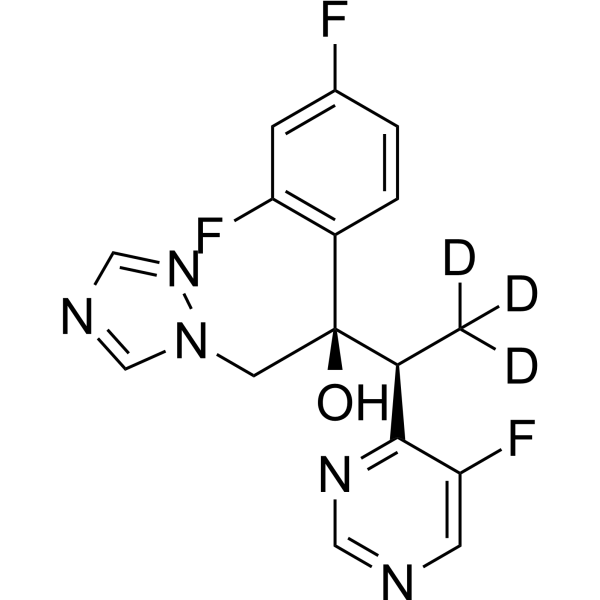
-
- HY-12390
-
|
Lopramine
|
Others
|
Neurological Disease
|
|
Lofepramine (Lopramine) is a potent tricyclic antidepressant and is extensively metabolised to Desipramine. The antidepressant activity of Lofepramine stems from the facilitation of noradrenergic neurotransmission by uptake inhibition. Lofepramine may also potentiate serotoninergic neurotransmission by inhibition of the neuronal uptake of serotonin and the enzyme tryptophan pyrrolase. Lofepramine has significant anxiolytic efficacy in addition to its antidepressant properties .
|
-
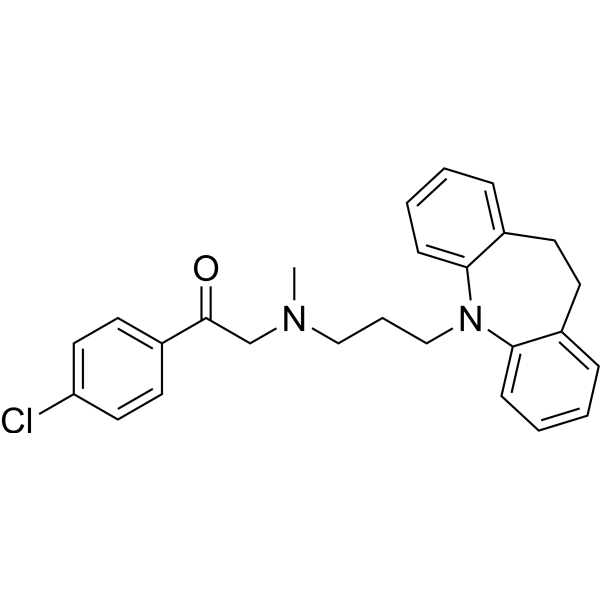
-
- HY-12390A
-
|
Lopramine hydrochloride
|
Others
|
Neurological Disease
|
|
Lofepramine (Lopramine) hydrochloride is a potent tricyclic antidepressant and is extensively metabolised to Desipramine. The antidepressant activity of Lofepramine hydrochloride stems from the facilitation of noradrenergic neurotransmission by uptake inhibition. Lofepramine hydrochloride may also potentiate serotoninergic neurotransmission by inhibition of the neuronal uptake of serotonin and the enzyme tryptophan pyrrolase. Lofepramine hydrochloride has significant anxiolytic efficacy in addition to its antidepressant properties .
|
-
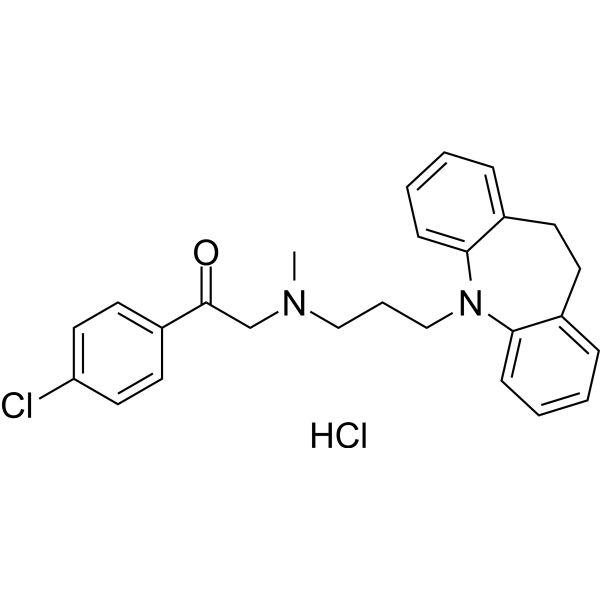
-
- HY-148466
-
|
|
Aldehyde Dehydrogenase (ALDH)
|
Cancer
|
|
IGUANA-1 is a potent inhibitor of ALDH1B1, which is a mitochondrial enzyme that promotes colorectal and pancreatic cancer. IGUANA-1 has significant inhibition against cancer cells .
|
-

-
- HY-14829F
-
|
5-epi-Isofagomine
|
Glucosidase
|
Metabolic Disease
|
|
L-Afegostat (5-epi-Isofagomine) is a glycosidase inhibitor. L-Afegostat is an iminosugar that can be used for the synthesis of carbohydrates. L-Afegostat shows enzyme inhibition to β-Glucosidase with an Ki of 30 μM .
|
-

-
- HY-121275
-
|
|
Pyruvate Kinase
|
Cancer
|
|
Benserazide is a PKM2 inhibitor. Benserazide directly binds to and blocks PKM2 enzyme activity, leading to inhibition of aerobic glycolysis concurrent up-regulation of OXPHOS. Benserazide can be used for the research of melanoma .
|
-

-
- HY-17543
-
|
|
Deubiquitinase
|
Cancer
|
|
ML-323 is a reversible, potent USP1-UAF1 inhibitor with IC50 of 76 nM in a Ub-Rho assay. The measured inhibition constants of ML-323 for the free enzyme (Ki) is 68 nM.
|
-
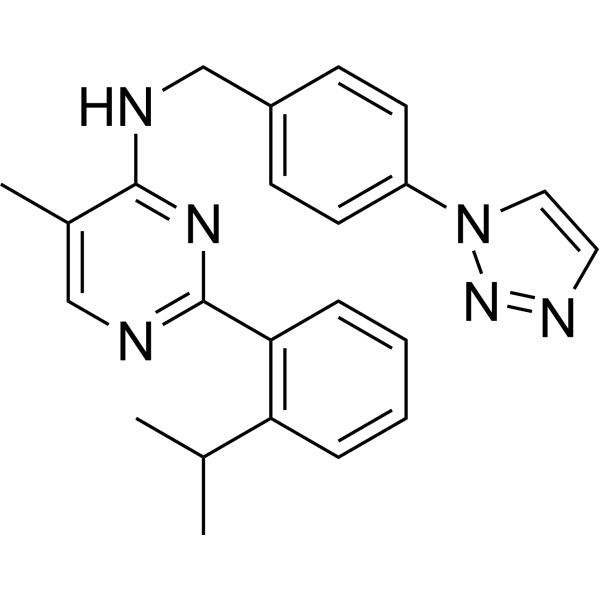
-
- HY-B0690
-
-

-
- HY-W032848
-
|
Y-3642
|
COX
|
Inflammation/Immunology
|
|
Tinoridine (Y-3642) is an orally active non-steroidal anti-inflammatory agent with potent antiperoxidative ability and radical scavenger activity. Tinoridine acts function by inhibiting COX enzyme, involves in hepatotoxicity inhibition. .
|
-
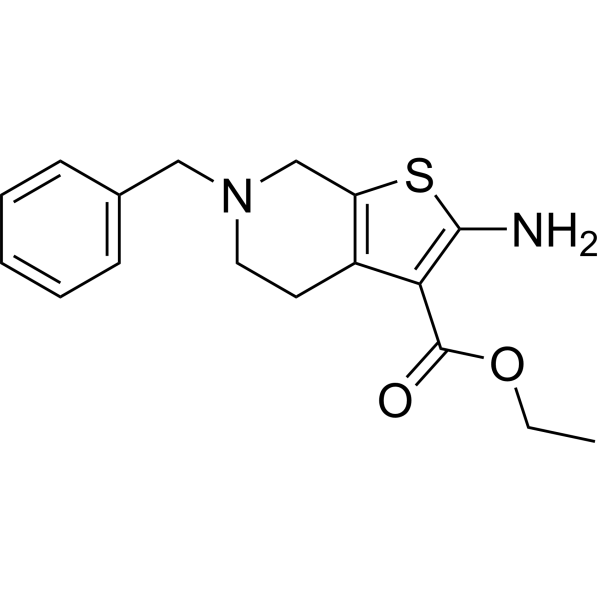
-
- HY-N2010
-
-
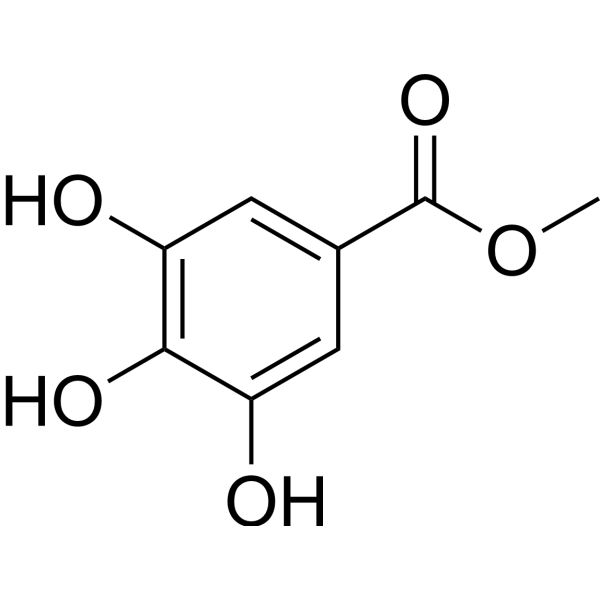
-
- HY-120865
-
|
|
NO Synthase
|
Inflammation/Immunology
|
|
1,3-PBIT is a potent inhibitor of iNOS with a Ki of 47 nM compared to Ki values for eNOS and nNOS are 9 and 0.25 μM, respectively, for the purified human enzymes. Its inhibition in whole cells is greatly diminished, presumably to poor membrane permeability.
|
-

-
- HY-N0579
-
Fraxin
2 Publications Verification
Fraxoside
|
Phosphodiesterase (PDE)
|
Inflammation/Immunology
|
|
Fraxin isolated from Cortex Fraxini, is a glucoside of fraxetin and reported to exert potent anti-oxidative stress action , anti-inflammatory and antimetastatic properties. Fraxin shows its antioxidative effect through inhibition of cyclo AMP phosphodiesterase enzyme .
|
-
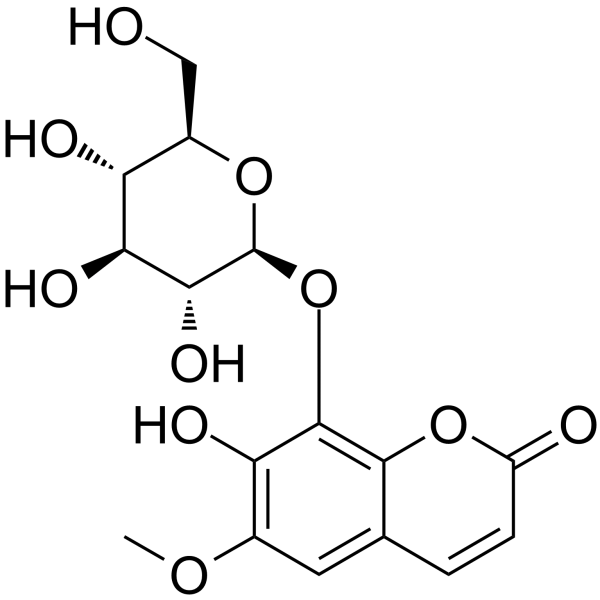
-
- HY-P2776
-
|
|
Endogenous Metabolite
|
Metabolic Disease
|
|
Hexokinase (ScHEX1) (EC 2.7.1.1) is a glycolytic enzyme hexokinase that is inhibited by n-acetylglucosamine. Inhibition of Hexokinase (ScHEX1) by n-acetylglucosamine leads to its separation from the mitochondrial outer membrane, resulting in activation of NLRP3 inflammasome .
|
-

-
- HY-12390S
-
|
|
Isotope-Labeled Compounds
|
Neurological Disease
|
|
Lofepramine-d3 (Lopramine-d3) is the deuterium labeled Lofepramine. Lofepramine (Lopramine) is a potent tricyclic antidepressant and is extensively metabolised to Desipramine. The antidepressant activity of Lofepramine stems from the facilitation of noradrenergic neurotransmission by uptake inhibition. Lofepramine may also potentiate serotoninergic neurotransmission by inhibition of the neuronal uptake of serotonin and the enzyme tryptophan pyrrolase. Lofepramine has significant anxiolytic efficacy in addition to its antidepressant properties[1].
|
-
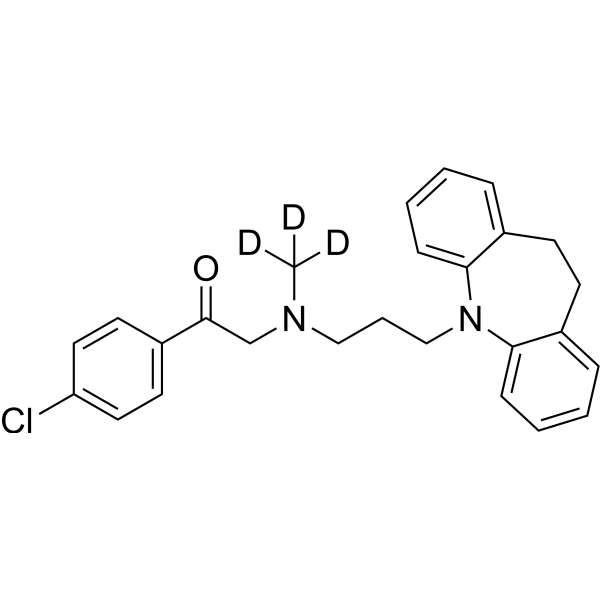
-
- HY-144738
-
|
|
Epoxide Hydrolase
FAAH
|
Inflammation/Immunology
|
|
Dual FAAH/sEH-IN-1 (compound 3) is a high affinity dual sEH (soluble epoxide hydrolase) and FAAH (fatty acid amide hydrolase) inhibitor, with IC50 values of 9.6 and 7 nM, respectively. Dual FAAH/sEH-IN-1 shows antinociception against the inflammatory phase .
|
-
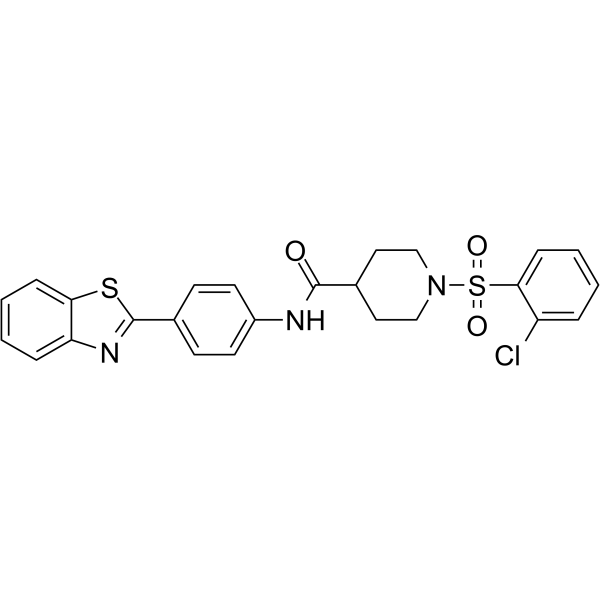
-
- HY-P2818
-
|
Apase
|
Endogenous Metabolite
|
Metabolic Disease
Cancer
|
|
Alkaline phosphatase, Bovine intestine (Apase) is a membrane-bound glycoprotein that catalyzes the hydrolysis of phosphate monoesters at alkaline pH. Alkaline phosphatase can be used in molecular biology and enzyme-free analysis. Inhibition of tissue nonspecific alkaline phosphatase can block intracellular lipid accumulation .
|
-
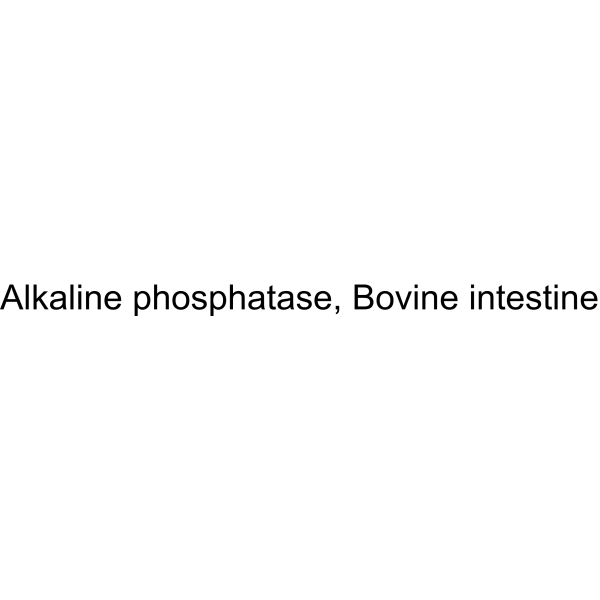
-
- HY-76200
-
|
UK-109496
|
Fungal
Bacterial
|
Infection
Cancer
|
|
Voriconazole (UK-109496) is a second-generation, broad-spectrum triazole antifungal agent that inhibits fungal ergosterol biosynthesis. Voriconazole exerts its antifungal activity by inhibition of 14-α-lanosterol demethylation, which is mediated by fungal cytochrome P450 enzymes .
|
-
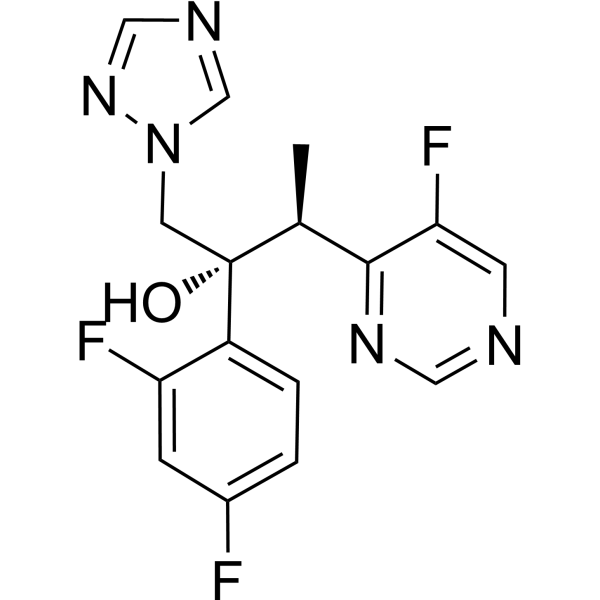
-
- HY-P1923
-
|
L-ASNase
|
Apoptosis
DNA/RNA Synthesis
|
Cancer
|
|
L-Asparaginase (L-ASNase) is a deamidating enzyme that catalyses the hydrolysis of L-asparagine and L-glutamine, and can be used for the research of acute lymphoblastic leukemia. L-Asparaginase depletes L-asparagine from plasma resulting in inhibition of RNA and DNA synthesis with the subsequent blastic cell apoptosis .
|
-
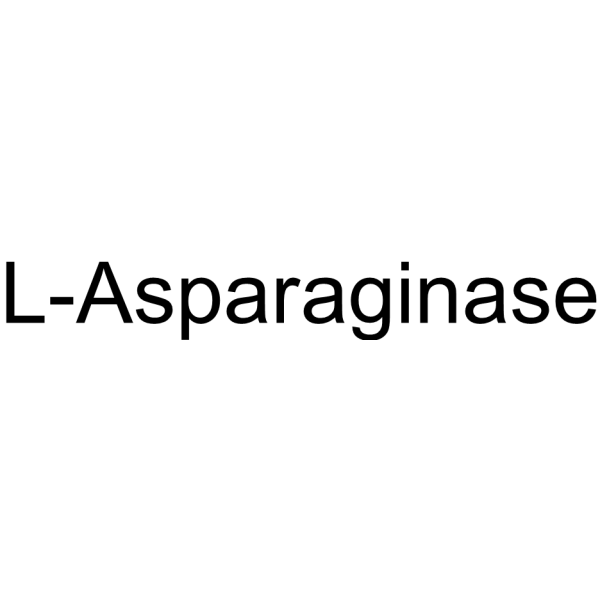
-
- HY-132987
-
|
ARX-1796; AV-006
|
Beta-lactamase
Bacterial
|
Infection
|
|
Avibactam tomilopil (ARX-1796, AV-006), an Avibactam proagent, is an orally bioavailable β-lactamase inhibitor. Avibactam has a spectrum of inhibition of class A and C β-lactamases, including ESBLs, AmpC and Klebsiella pneumoniae carbapenemase (KPC) enzymes .
|
-
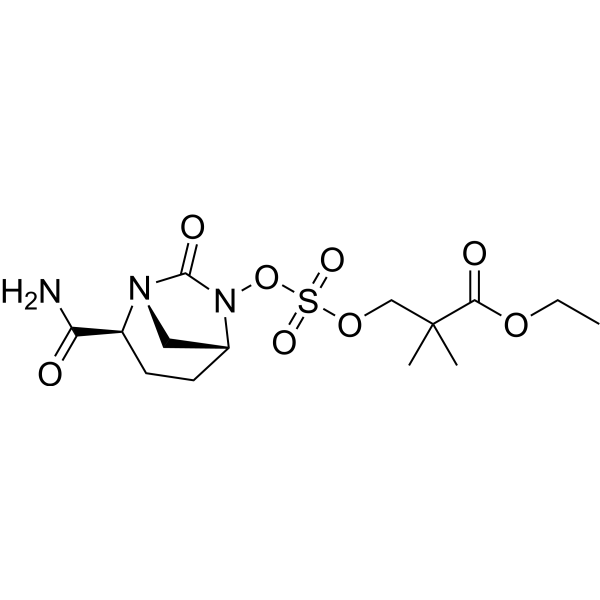
-
- HY-76200B
-
|
UK-109496 camphorsulfonate
|
Fungal
Bacterial
|
Infection
|
|
Voriconazole (UK-109496) camphorsulfonate is a second-generation, broad-spectrum triazole antifungal agent that inhibits fungal ergosterol biosynthesis. Voriconazole camphorsulfonate exerts its antifungal activity by inhibition of 14-α-lanosterol demethylation, which is mediated by fungal cytochrome P450 enzymes .
|
-
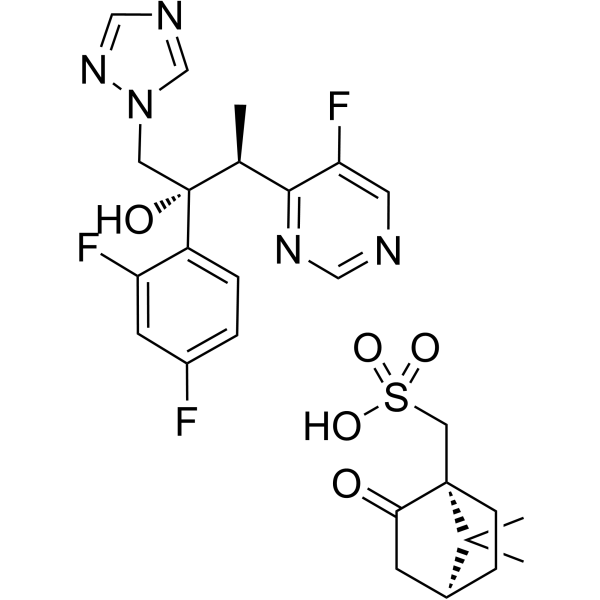
-
- HY-160912
-
|
|
ELOVL
|
Cancer
|
|
ELOVL6-IN-5 (compound B) is an inhibitor of the elongase enzyme of long-chain fatty acid family 6 (ELOVL6). ELOVL6 is a rate-limiting enzyme for the elongation of saturated and monounsaturated long-chain fatty acids and is an effective target for inhibiting diabetes. ELOVL6-IN-5 reduces hepatic fatty acid levels in a mouse model of diet-induced obesity (DIO). However, ELOVL6 inhibition by ELOVL6-IN-5 did not improve insulin resistance .
|
-

-
- HY-157068
-
|
|
Ferroptosis
|
Cancer
|
|
icFSP1 is a potent ferroptosis suppressor protein-1 (FSP1) inhibitor. icFSP1 does not competitively inhibit FSP1 enzyme activity, but instead triggers subcellular relocalization of FSP1 from the membrane and FSP1 condensation before ferroptosis induction, in synergism with GPX4 inhibition .
|
-

-
- HY-152252
-
|
|
Bacterial
Fungal
|
Infection
|
|
Antibacterial agent 133 (4l) is an antimicrobial agent that has shown anti-Candida activity, particularly through LMD enzyme inhibition. Antibacterial agent 133 shows MIC90 values of 1.95 μg/mL against Candida albicans ATCC 24433, Candida smoothis ATCC 90030 and Candida subtilis ATCC 22019 .
|
-

-
- HY-133116
-
|
|
Adrenergic Receptor
|
Neurological Disease
|
|
4-Hydroxyatomoxetine is an active metabolite of Atomoxetine. 4-Hydroxyatomoxetine is metabolized by the enzyme cytochrome P450 2D6 (CYP2D6). Atomoxetine hydrochloride is a potent and selective noradrenalin re-uptake inhibitor (Ki values are 5 nM, 77 nM and 1451 nM for inhibition of radioligand binding to human NET, SERT and DAT respectively) .
|
-
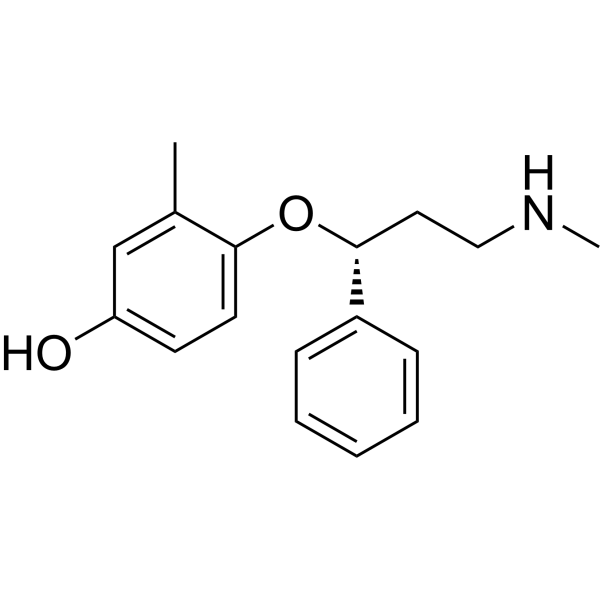
-
- HY-P2802
-
|
α-D-Glucosidase
|
Glucosidase
|
Metabolic Disease
|
|
α-Glucosidase (α-D-Glucosidase), a carbohydrate hydrolyzing enzyme, catalyzes the liberation of α-glucose from the non-reducing end of the substrate. α-Glucosidase can facilitate the absorption of glucose by the small intestine. Inhibition of α-Glucosidase is an effective management of non-insulin-dependent diabetes mellitus (NIDDM) .
|
-
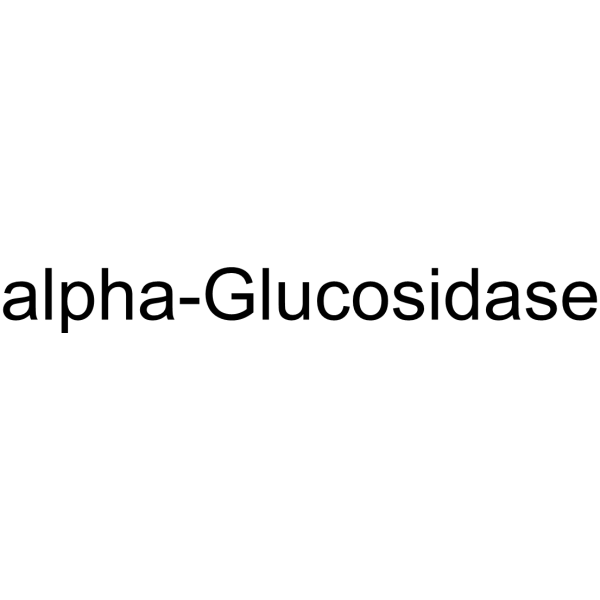
-
- HY-147691
-
|
|
Glutathione Peroxidase
Potassium Channel
|
Inflammation/Immunology
|
|
MPO-IN-5 (compound 1) is a potent, irreversible MPO (myeloperoxidase) inhibitor. MPO-IN-5 inhibits MPO peroxidation and hERG binding, with IC50 values of 0.22 and 2.8 μM, respectively. MPO-IN-5 shows rapid kinetics of inhibition, with enzyme inactivation rate (kinact/Ki) of 23000 M −1s −1 .
|
-
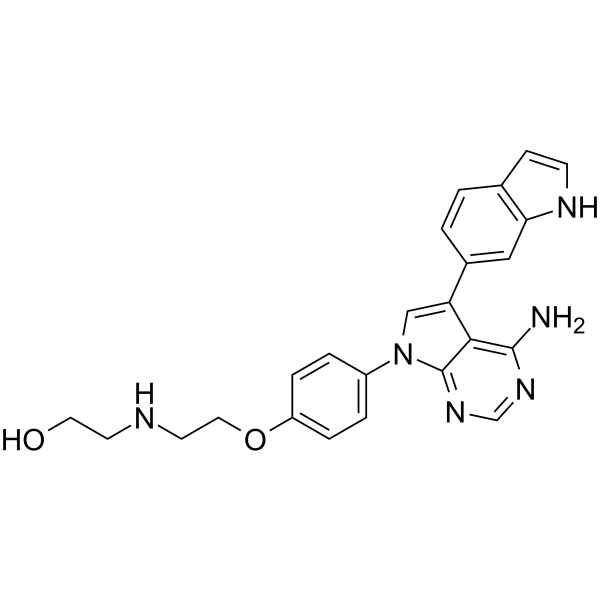
-
- HY-W587663
-
|
|
Dihydrofolate reductase (DHFR)
|
Infection
|
|
4 '-DTMP is a DHFR inhibitor with Ki of 5.1 nM (DHFR WT) and 34.3 nM (DHFR L28R), respectively. 4 '-DTMP carries a polar modification that induces additional local interactions with the enzyme. In particular, the hairpin structure on the M20 ring is related to the internal communication of the DHFR. 4 '-DTMP has potential inhibition of E.coli .
|
-

-
- HY-16731
-
|
EVT 302; RG1577; RO4602522
|
Monoamine Oxidase
Reactive Oxygen Species
|
Neurological Disease
|
|
Sembragiline (EVT 302) is a potent, selective and reversible monoamine oxidase B (MAO-B) inhibitor. Sembragiline reduces the metabolism of dopamine and other amine neurotransmitters by inhibiting the activity of the MAO-B enzyme, thereby potentially increasing the concentration of these neurotransmitters in the brain. Inhibition of the MAO-B enzyme also reduces the formation of toxic reactive oxygen species (ROS) that play a role in the pathological process of AD. Sembragiline has good oral activity and blood-brain barrier permeability. Sembragiline can be used in studies of AD, especially in patients with AD who show increased MAO-B activity .
|
-

-
- HY-146410
-
|
|
Angiotensin Receptor
|
Others
|
|
AT2R antagonist 1 (compound 21) is a potent and high selective AT2R (angiotensin II AT2 receptor) ligand. AT2R antagonist 1 exhibits a fair AT2R affinity, with a Ki of 29 nM. AT2R antagonist 1 also inhibits common agent-metabolizing CYP enzymes. AT2R antagonist 1 shows high stability in human, rat and mouse liver microsomes .
|
-
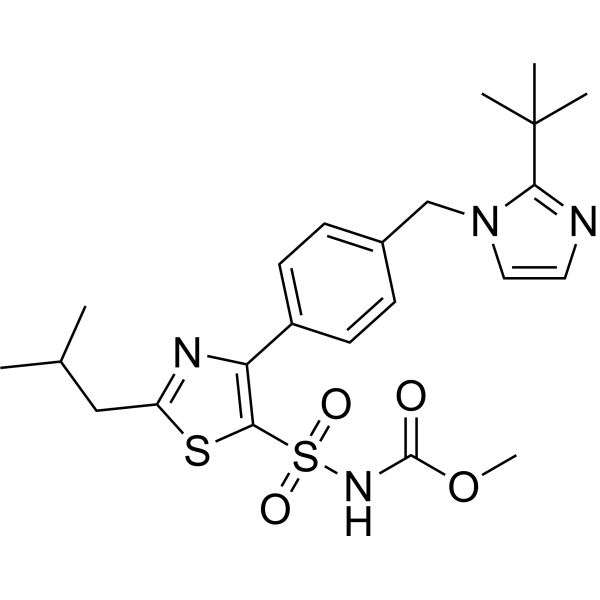
-
- HY-144718
-
|
|
Phosphatase
|
Metabolic Disease
|
|
PTP1B-IN-17 (Compound 45), a potential selective benzimidazole derivative, acts as a protein tyrosine phosphatase 1B (PTP1B) inhibitor with a Ki of 30.2 μM. PTP1B-IN-17 can be used for the research of type 2 diabetes.
|
-

-
- HY-144716
-
|
|
Phosphatase
|
Metabolic Disease
|
|
PTP1B-IN-19 (Compound 43), a potential selective benzimidazole derivative, acts as a protein tyrosine phosphatase 1B (PTP1B) inhibitor with a Ki of 23.3 μM. PTP1B-IN-19 can be used for the research of type 2 diabetes.
|
-
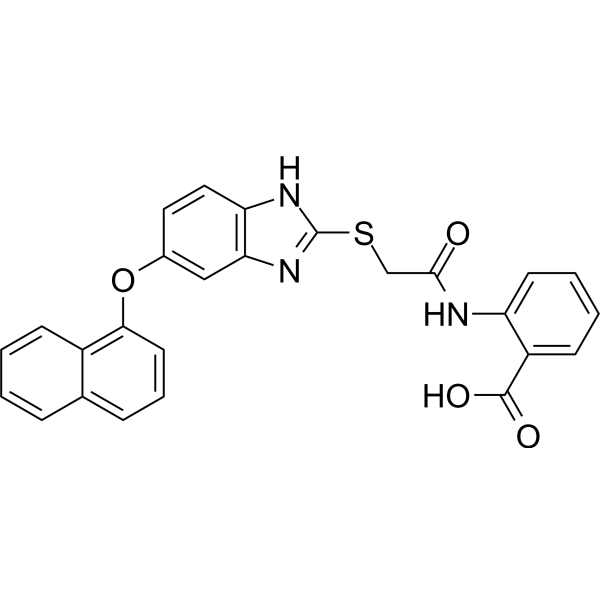
-
- HY-144713
-
|
|
Phosphatase
|
Metabolic Disease
|
|
PTP1B-IN-16 (Compound 46), a potential selective benzimidazole derivative, acts as a protein tyrosine phosphatase 1B (PTP1B) inhibitor with a Ki of 12.6 μM. PTP1B-IN-16 can be used for the research of type 2 diabetes.
|
-
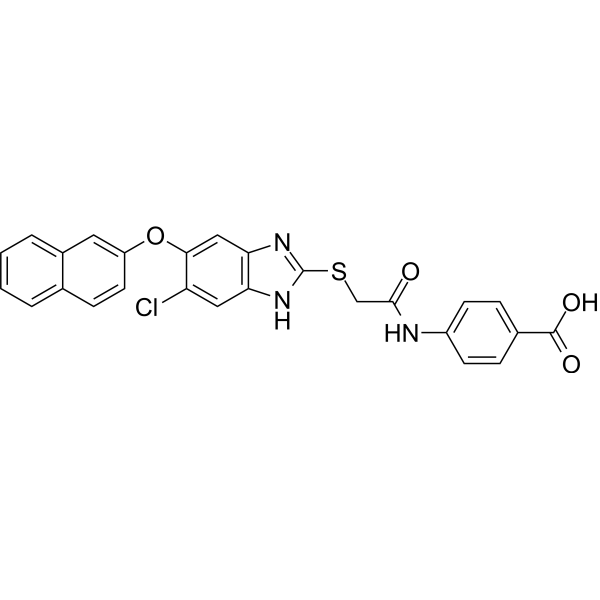
- HY-A0004
-
Decitabine
Maximum Cited Publications
87 Publications Verification
5-Aza-2'-deoxycytidine; 5-AZA-CdR; NSC 127716
|
DNA Methyltransferase
Apoptosis
Nucleoside Antimetabolite/Analog
|
Cancer
|
|
Decitabine (NSC 127716) is an orally active deoxycytidine analogue antimetabolite and a DNA methyltransferase inhibitor. Decitabine incorporates into DNA in place of cytosine can covalently trap DNA methyltransferase to DNA causing irreversible inhibition of the enzyme. Decitabine induces cell G2/M arrest and cell apoptosis. Decitabine has potent anticancer activity .
|
-
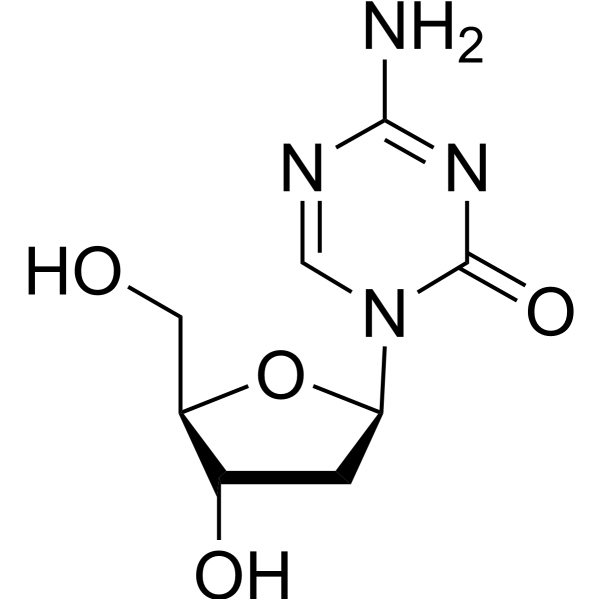
- HY-76200R
-
|
UK-109496 (Standard)
|
Fungal
Bacterial
|
Infection
Cancer
|
|
Voriconazole (Standard) is the analytical standard of Voriconazole. This product is intended for research and analytical applications. Voriconazole (UK-109496) is a second-generation, broad-spectrum triazole antifungal agent that inhibits fungal ergosterol biosynthesis. Voriconazole exerts its antifungal activity by inhibition of 14-α-lanosterol demethylation, which is mediated by fungal cytochrome P450 enzymes .
|
-

- HY-117318
-
|
|
Phosphodiesterase (PDE)
|
Infection
|
|
PDE12-IN-1 is a potent and selective PDE12 inhibitor with a pIC50 value for enzyme inhibition of 9.1. PDE12-IN-1 increases 2′,5′-linked adenylate polymers (2-5A) levels, and the pEC50 value is 7.7. PDE12-IN-1 shows antiviral activity .
|
-
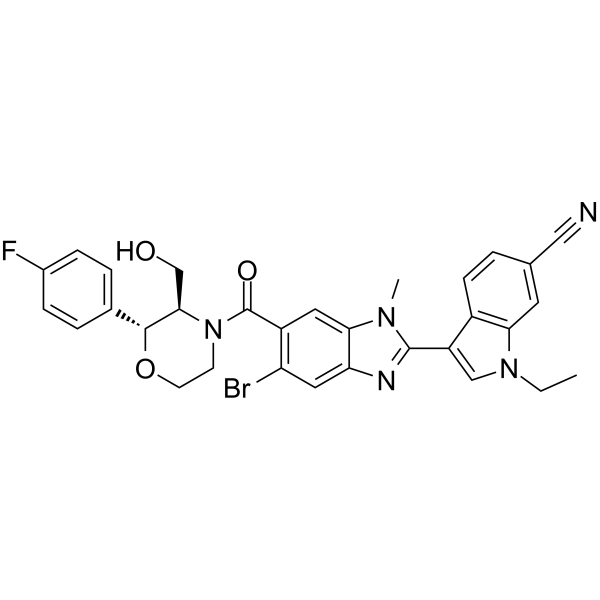
- HY-130244
-
|
|
Beta-secretase
|
Neurological Disease
|
|
BACE1-IN-5 (Compound 15) is a β-site amyloid precursor protein cleaving enzyme 1 (BACE1) inhibitor with an IC50 of 9.1 nM, and also inhibits cellular amyloid-β (Aβ) with an IC50 of 0.82 nM. BACE1-IN-5 has a medicinal chemistry that improves hERG inhibition and P-gp efflux .
|
-
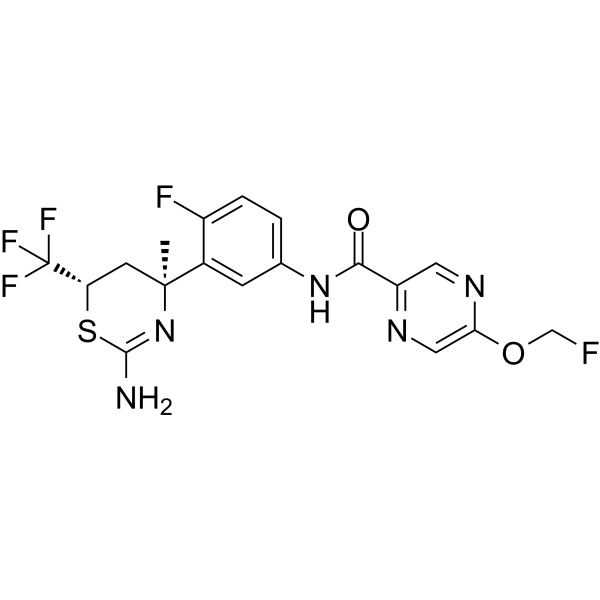
- HY-145270
-
|
|
Others
|
Metabolic Disease
|
|
ELOVL1-IN-2 is an elongation of very long chain fatty acid 1 (ELOVL1) enzyme inhibitor, ELOVL1-IN-2 shows weak ELOVL1 inhibition (IC50=21 μM) and moderate potency in a primary cellular assay (HEK293 C26 IC50=6.7 μM) .
|
-
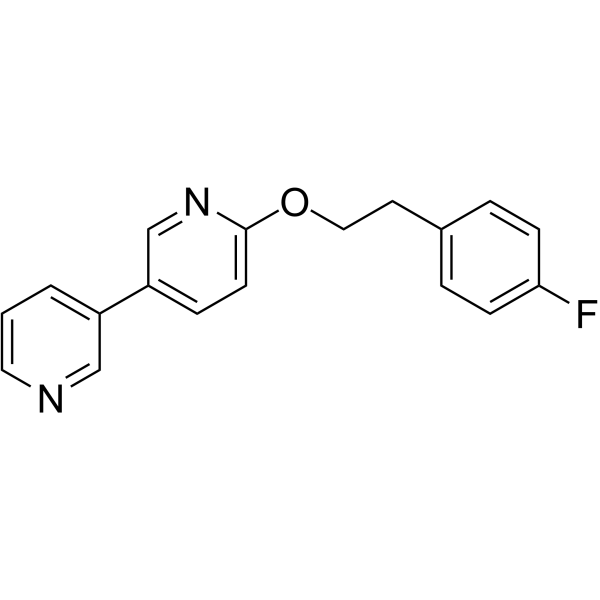
- HY-143897
-
|
|
Pim
Apoptosis
|
Cancer
|
|
PIM1-IN-3 (Compound HL8) is a potent inhibitor of PIM1. PIM1-IN-3 shows selective inhibition for the PIM-1 enzyme. PIM1-IN-3 induces apoptosis efficiently in Colo320 cells. PIM1-IN-3 has the potential for the research of cancer diseases .
|
-
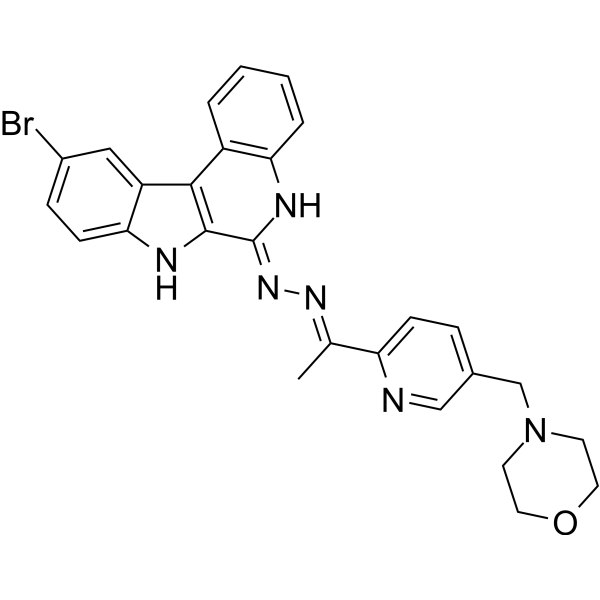
- HY-143898
-
|
|
Pim
|
Cancer
|
|
PIM1-IN-4 (Compound 8) is a potent inhibitor of PIM1. PIM1-IN-4 reveals strong inhibition of five other enzymes, i.e., SGK-1, PKA, CaMK-1, GSK3β, and MSK1. PIM1-IN-4 has the potential for the research of cancer diseases .
|
-
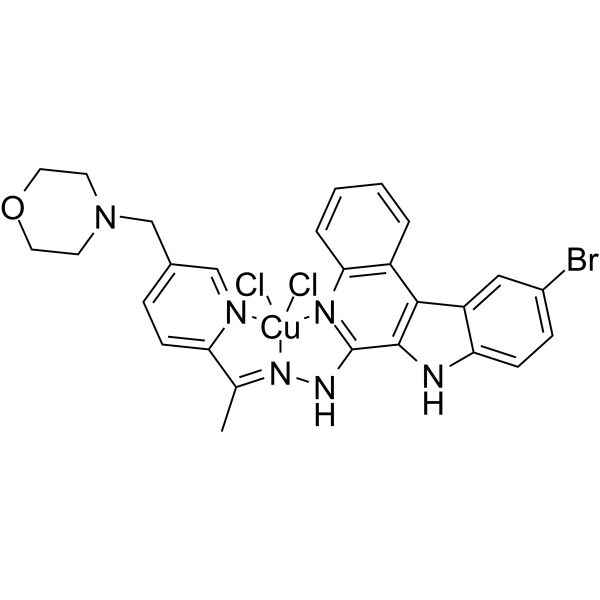
- HY-W014316
-
|
|
Bacterial
Fungal
|
Infection
|
|
5-Bromo-5-nitro-1,3-dioxane, an antimicrobial compound, is effective against Gram-positive and Gram-negative bacteria and fungi, including yeast. 5-Bromo-5-nitro-1,3-dioxane inhibits enzyme activity and subsequent inhibition of microbial growth by the oxidation of essential protein thiol .
|
-
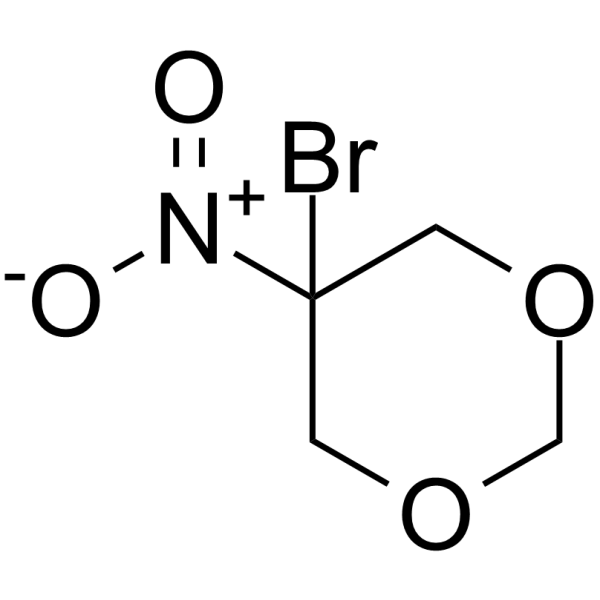
- HY-162238
-
|
|
Parasite
|
Infection
|
|
OSM-S-106 is a pro-inhibitor and that inhibition of PfAsnRS occurs via enzyme-mediated production of an Asn-OSM-S-106 adduct. OSM-S-106 inhibits protein translation and activates the amino acid starvation response. OSM-S-106 exhibits selective activity against Plasmodium blood and liver stages and low intrinsic clearance by human microsomes .
|
-

- HY-W422288
-
|
(Rac)-Ketoconazol; (Rac)-R 41400
|
Fungal
Cytochrome P450
|
Infection
|
|
(Rac)-Ketoconazole ((Rac)-R 41400) is an antifungal imidazole compound with oral activity. (Rac)-Ketoconazole interferes with ergosterol synthesis by inhibiting cytochrome P450-dependent 14α-sterol demethylase (CYP51), a key enzyme on the fungal cell membrane, leading to membrane dysfunction and ultimately inhibition of fungal growth and reproduction. (Rac)-Ketoconazole is indicated for studies of fungal infections .
|
-

- HY-116804
-
|
|
Histone Methyltransferase
|
Cancer
|
|
ZLD1039 is a potent, highly selective, and orally bioavailable EZH2 inhibitor. ZLD1039 shows potent and concentration-dependent inhibition of PRC2 enzymatic activity against EZH2 wild-type as well as Y641F, and A677G mutant enzymes with IC50 values of 5.6, 15, and 4.0 nM, respectively. ZLD1039 inhibits breast tumor growth and metastasis .
|
-
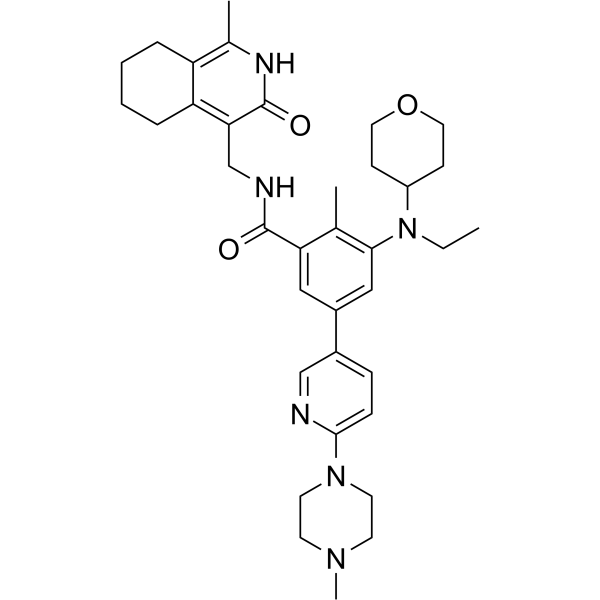
- HY-158177
-
|
|
EGFR
|
Cancer
|
|
EGFR T790M/L858R-IN-6 (compound 53), a pyrimidine compound, is a potent EGFR T790M/L858R inhibitor. EGFR T790M/L858R-IN-6 shows 90.88% enzyme activity inhibition with 0.05 μM .
|
-
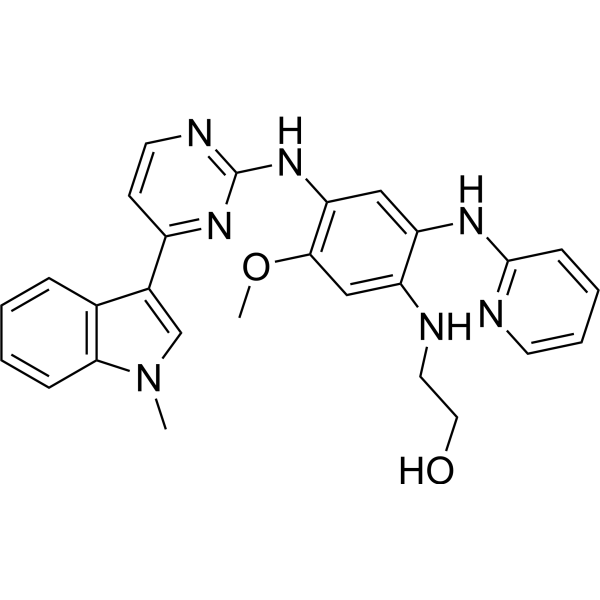
- HY-119726
-
|
APX001; E1211
|
Fungal
|
Infection
Inflammation/Immunology
|
|
Fosmanogepix (APX001) is a broad-spectrum agent against invasive fungal infections. Fosmanogepix (APX001) targets the conserved Gwt1 enzyme required for the localization of glycosylphosphatidylinositol-anchored mannoproteins in fungi. This inhibition prevents the appropriate localization of cell wall mannoproteins, which compromises cell wall integrity, biofilm formation, germ tube formation, and fungal growth. Fosmanogepix (APX001) can be used for invasive fungal infections research .
|
-
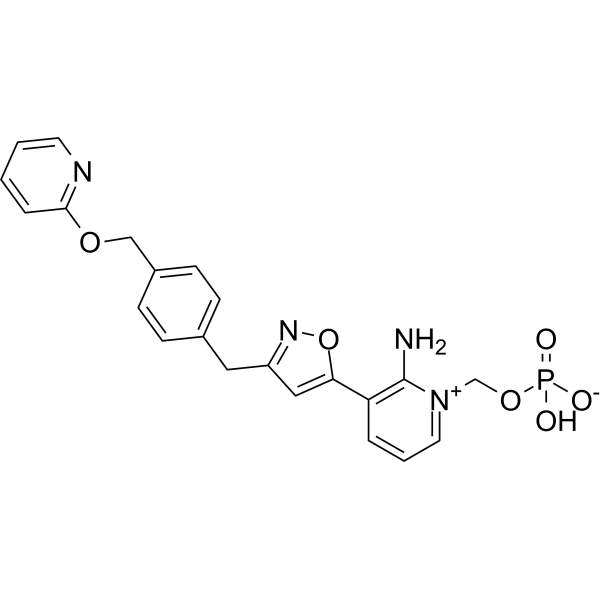
- HY-149987
-
|
KHK-IN-3
|
Ketohexokinase
|
Cardiovascular Disease
Metabolic Disease
Inflammation/Immunology
|
|
KHK-IN-3 (Example 1) is a ketohexokinase (KHK) inhibitor. KHK-IN-3 can be used in the study of kidney disease, nonalcoholic steatohepatitis (NASH), diabetes and heart failure. KHK is a rate-limiting enzyme and fructokinase involved in fructose metabolism. KHK catalyzes the phosphorylation of fructose to fructose-1-phosphate (FIP) at the expense of ATP. The lack of feedback inhibition of fructose metabolism triggers the accumulation of downstream intermediates such as lipogenesis, gluconeogenesis, and oxidative phosphorylation .
|
-
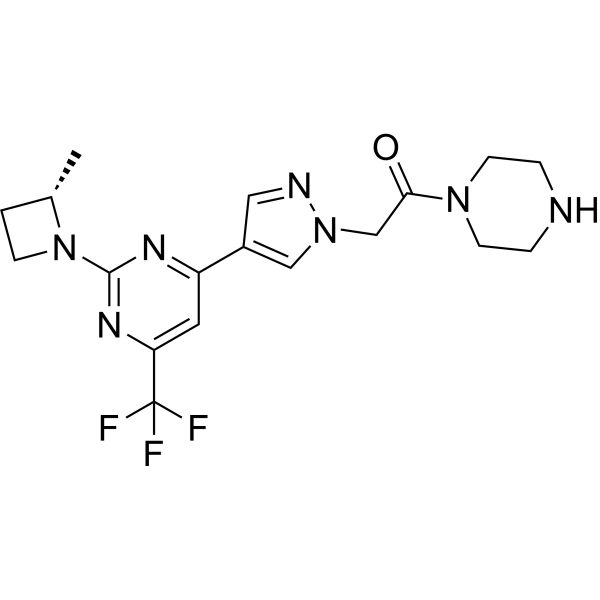
- HY-A0004R
-
|
5-Aza-2'-deoxycytidine (Standard); 5-AZA-CdR (Standard); NSC 127716 (Standard)
|
DNA Methyltransferase
Apoptosis
Nucleoside Antimetabolite/Analog
|
Cancer
|
|
Decitabine (Standard) is the analytical standard of Decitabine. This product is intended for research and analytical applications. Decitabine (NSC 127716) is an orally active deoxycytidine analogue antimetabolite and a DNA methyltransferase inhibitor. Decitabine incorporates into DNA in place of cytosine can covalently trap DNA methyltransferase to DNA causing irreversible inhibition of the enzyme. Decitabine induces cell G2/M arrest and cell apoptosis. Decitabine has potent anticancer activity .
|
-
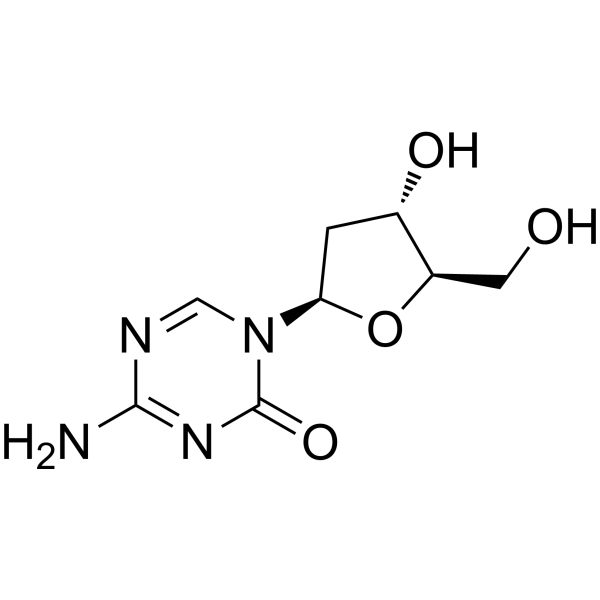
- HY-158368
-
|
|
Apoptosis
ROS Kinase
|
Cancer
|
|
PRDX1-IN-2 (compound 15) is a selective inhibitor of the antioxidant enzyme Peroxiredoxin 1 (PRDX1) (IC50=0.35 μM). PRDX1-IN-2 decreases the mitochondria membrane potential of SW620 cells, probably due to ROS induced by PRDX1 inhibition, leading to cell apoptosis. PRDX1-IN-2 can be used for colorectal cancer research .
|
-

- HY-N0385
-
|
|
AMPK
Calcium Channel
|
Cardiovascular Disease
Metabolic Disease
|
|
Gomisin J is a small molecular weight lignan found in Schisandra chinensis and has been demonstrated to have vasodilatory activity . Gomisin J suppresses lipid accumulation by regulating the expression of lipogenic and lipolytic enzymes and inflammatory molecules through activation of AMPK, LKB1 and Ca 2+/calmodulin-dependent protein kinase II and inhibition of fetuin-A in HepG2 cells. gomisin J has potential benefits in treating nonalcoholic fatty liver disease .
|
-
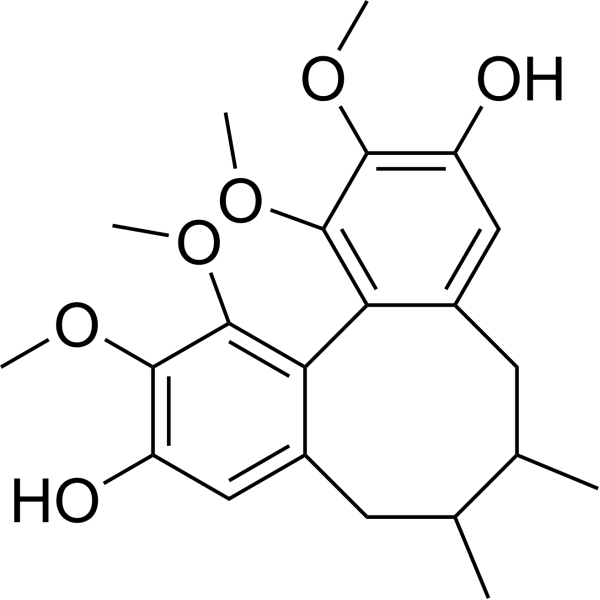
- HY-144381
-
|
|
Bacterial
|
Infection
|
|
Glutamate-5-kinase-IN-1 (compound 50) is a potent glutamate-5-kinase (G5K) inhibitor with an MIC (minimum inhibitory concentration) of 4.1 µM. Glutamate-5-kinase-IN-1 shows G5K inhibition by alters the ATP binding site architecture for enzyme recognition. Glutamate-5-kinase-IN-1 has the potential for the research of anti-TB agents .
|
-
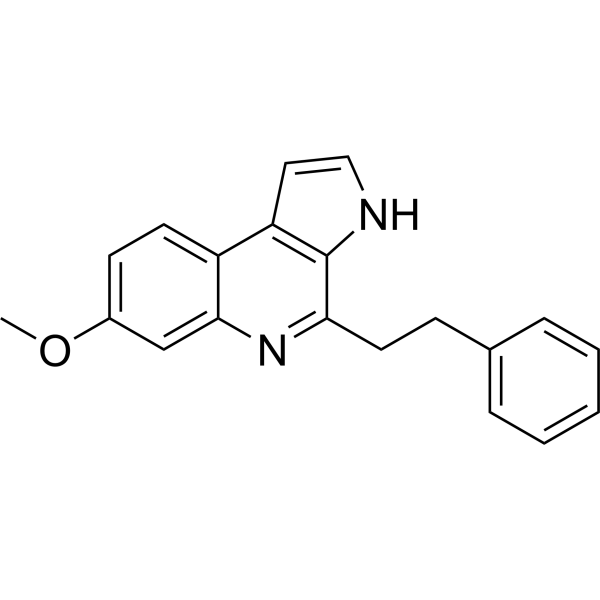
- HY-N2045
-
|
|
PI3K
Akt
Apoptosis
Cytochrome P450
|
Neurological Disease
|
|
Musk ketone is a widely used artificial fragrance. Musk ketone is also a cytochrome P450 enzyme inducer. Musk ketone shows mutagenic and comutagenic effects in Hep G2 cells and induces neural stem cell proliferation and differentiation in cerebral ischemia via activation of the PI3K/Akt signaling pathway. In the brain, musk ketone is neuroprotective against stroke injury through inhibition of cell apoptosis .
|
-

- HY-W011258
-
|
L-Tyrosyl-L-phenylalanine
|
Xanthine Oxidase
Angiotensin-converting Enzyme (ACE)
|
Inflammation/Immunology
Cancer
|
|
H-Tyr-Phe-OH (L-Tyrosyl-L-phenylalanine) is an orally active inhibitor of Angiotensin converting enzyme (ACE), with an inhibiton rate of 48% at 50 μM. H-Tyr-Phe-OH can be used as an biomarker for differentiating benign thyroid nodules (BTN) from thyroid cancer (TC). H-Tyr-Phe-OH exhibits xanthine oxidase inhibition (uric acid lowering) activity and serves as regulator in IL-8 production in neutrophil-like cells .
|
-

- HY-111191
-
|
|
Adrenergic Receptor
|
Neurological Disease
|
|
ONO-2952 is a potent, selective and orally active translocator protein 18 kDa (TSPO) antagonist with Ki of 0.33-9.30 nM for rat and human TSPO. ONO-2952 is more selective for TSPO than other receptors, transporters, ion channels and enzymes. ONO-2952 exerts its anti-stress effects through inhibition of excessive activation of noradrenergic system in the brain without the amnesic effect. ONO-2952 has the potential for irritable bowel syndrome treatment .
|
-
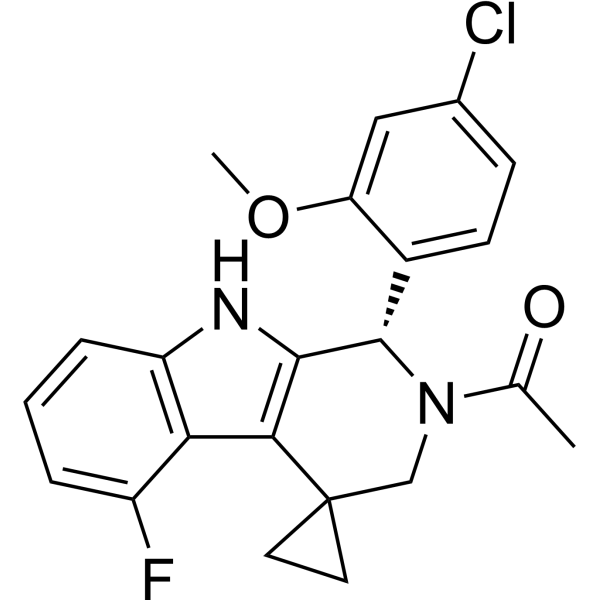
- HY-161063
-
-
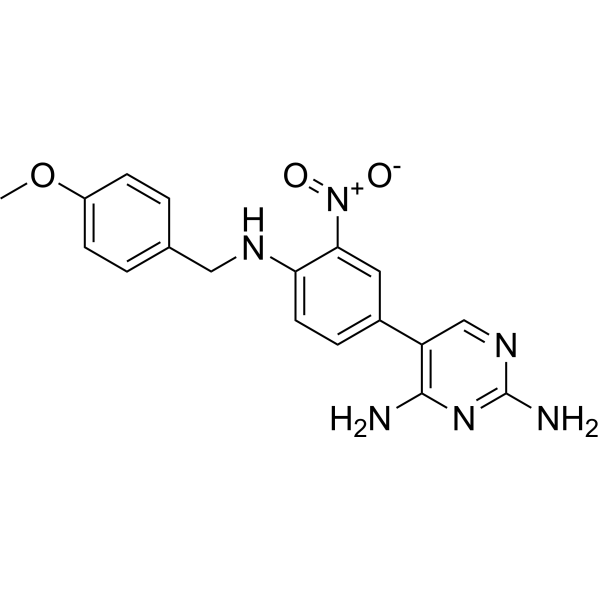
- HY-161064
-
|
|
Dihydrofolate reductase (DHFR)
|
Cancer
|
|
DHFR-IN-15 (compound 34) is a dihydrofolate reductase (DHFR) inhibitor with potential anticancer activity. DHFR-IN-15 effectively binds to DHFR in cells, reducing DHFR levels to 10 nM .
|
-
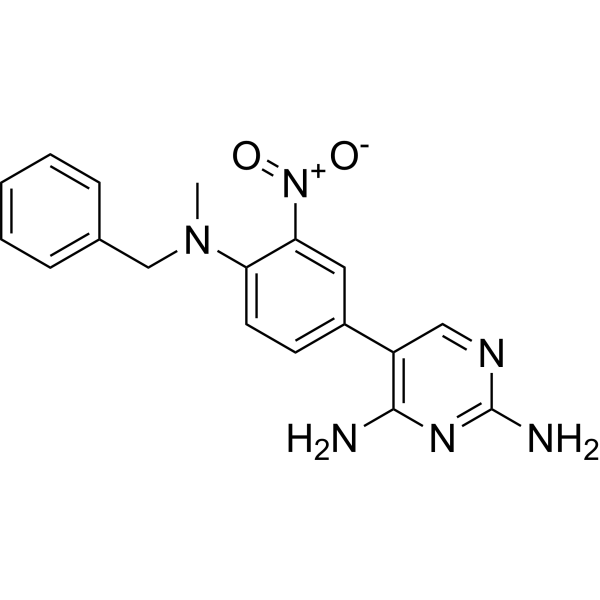
- HY-N8161
-
|
Kaempferol 3,7-diglucoside
|
Glucosidase
Cholinesterase (ChE)
|
Neurological Disease
|
|
Kaempferol-3,7-di-O-β-glucoside (Kaempferol 3,7-diglucoside), a flavonol, possesses enzyme inhibition property towards α-amylase, α-glucosidase and Acetylcholinesterase. Kaempferol-3,7-di-O-β-glucoside protects differentiating neuronal cells, SH-SY5Y from Amyloid β peptide-induced injury. Kaempferol-3,7-di-O-β-glucoside has the potential for Alzheimer's research .
|
-
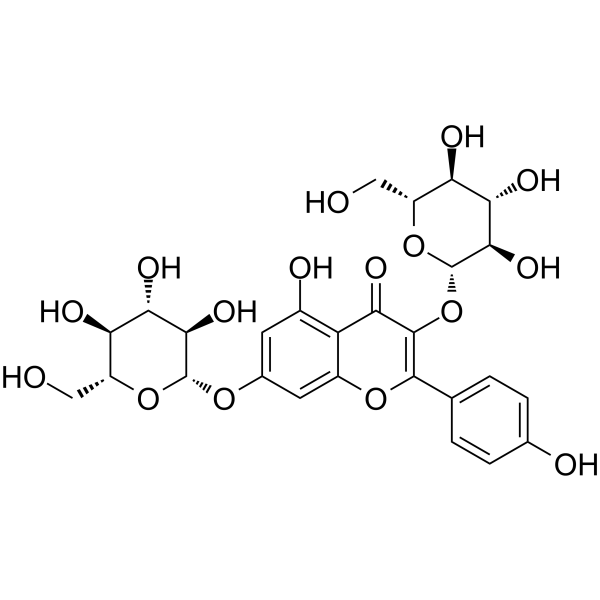
- HY-147720
-
|
|
γ-secretase
|
Neurological Disease
|
|
5-{8-[(3,4'- difluoro [1,1'- biphenyl]-4-yl) methoxy] - 2-methylimidazo [1,2-a] pyridin-3-yl}-n-methylpyridin-2-formamide (1o) showed high potency in vitro and brain exposure, inducing brain a β 42 levels were significantly reduced and showed undetectable inhibition of cytochrome P450 enzymes. In addition, compound 1o showed excellent anti cognitive deficit effect in AD model mice.
|
-
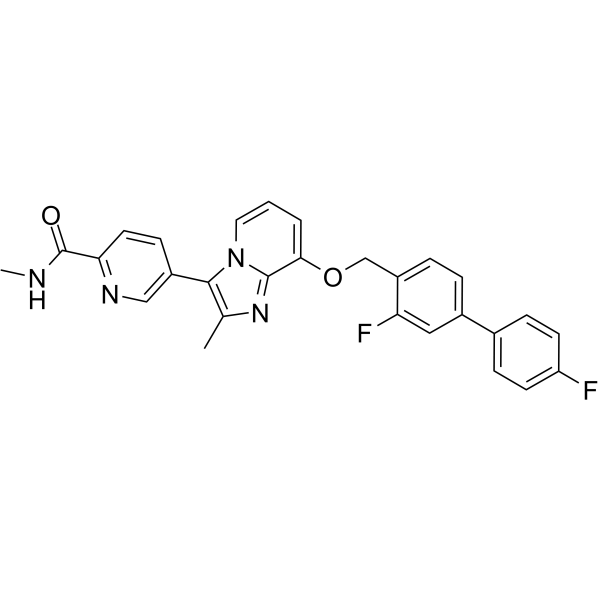
- HY-114564
-
|
E5510
|
Prostaglandin Receptor
|
Cardiovascular Disease
|
|
Satigrel (E5510) is a potent inhibitor of platelet aggregation. Satigrel inhibits collagen- and arachidonic acid-induced platelet aggregation through preventing thromboxane A2 synthesis by selective inhibition of the target enzyme, PGHS1, which exists in platelets. Satigrel inhibits PGHS1 (IC50: 0.081 μM) and PGHS2 (IC50: 5.9 μM). Satigrel is against Type III PDE, Type V and Type II (IC50: 15.7 μM, 39.8 μM and 62.4 μM, respectively) .
|
-
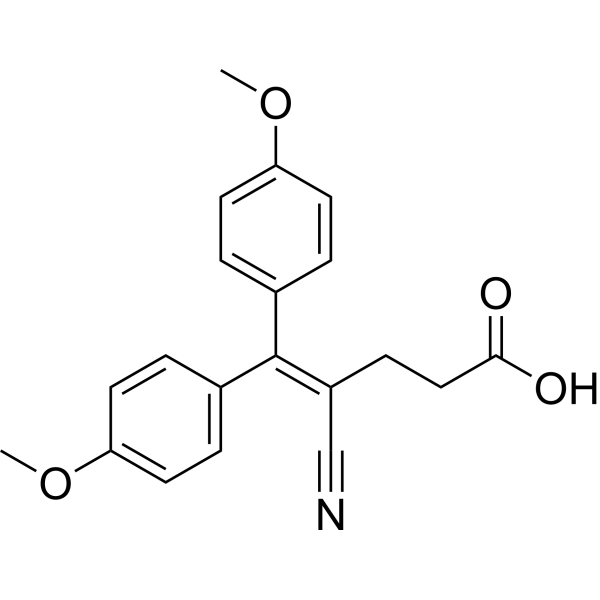
- HY-161449
-
|
|
11β-HSD
|
Metabolic Disease
|
|
JTT-654 is an orally active, potent and selective11β-Hydroxysteroid dehydrogenase type 1 (11β-HSD1) inhibitor. The IC50 of JTT-654 for 11β-HSD1 is 4.65, 0.97, and 0.74 nM in human, rat, and mouse recombinant enzymes, respectively. JTT-654 showed competitive inhibition against human recombinant enzyme. The IC50 value for human 11β-HSD2 is > 30 μM (human 11β-HSD2 is responsible for the reverse reaction against human 11β-HSD1). JTT-654 ameliorates insulin resistance and non-obese type 2 diabetes by inhibiting adipose tissue and liver 11β-HSD1 .
|
-

- HY-108347
-
|
|
P-glycoprotein
BCRP
|
Metabolic Disease
|
|
CP-100356 hydrochloride is an orally active dual MDR1 (P-gp)/BCRP inhibitor, with an IC50s of 0.5 and 1.5 µM for inhibiting MDR1-mediated Calcein-AM transport and BCRP-mediated Prazosin transport, respectively. CP-100356 hydrochloride is also a weak inhibitor of OATP1B1 (IC50=∼66 µM). CP-100356 hydrochloride is devoid of inhibition against MRP2 and major human P450 enzymes (IC50>15 µM) .
|
-
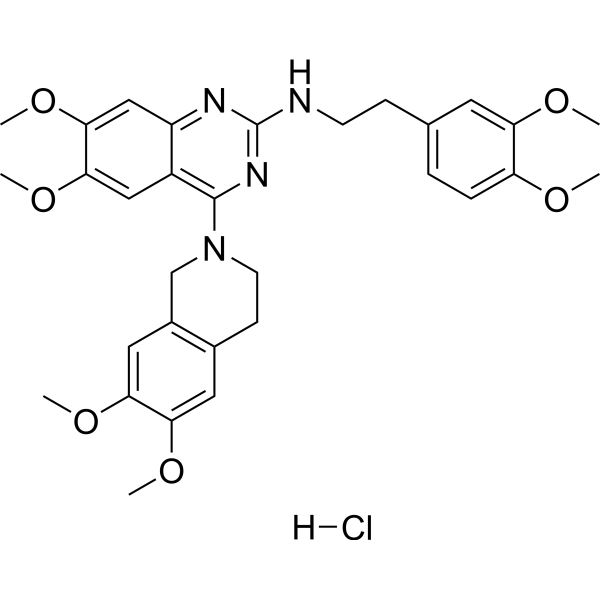
- HY-150260
-
|
|
Bacterial
|
Infection
|
|
SA09-Cu is a noncompetitive and potent NDM-1 inhibitor with an IC50 of 9.6 nM. SA09-Cu can convert NDM-1 into an inactive state by oxidizing the Zn(II)-thiolate site of the enzyme and avoids to be reduced by intracellular thiols of bacteria. SA09-Cu exhibits excellent inhibition against a series of clinical NDM-1-producing carbapenem-resistant Enterobacteriaceae (CRE) in restoring the Meropenem (HY-13678) effect, and slows down the development of carbapenem resistance .
|
-
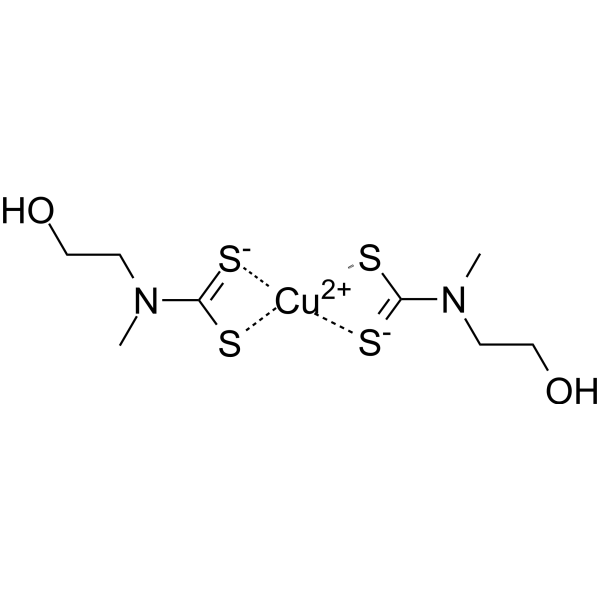
- HY-122026
-
|
PF-367
|
GSK-3
|
Neurological Disease
|
|
PF-04802367 (PF-367) is a highly selective GSK-3 inhibitor with an IC50 of 2.1 nM based on a recombinant human GSK-3β enzyme assay and 1.1 nM based on ADP-Glo assay. PF-04802367 shows desirable central nervous system (CNS) properties and potency. PF-04802367 is equally effective at inhibition of the two known GSK-3 isoforms (GSK-3α and GSK-3β) with IC50 values of 10.0 and 9.0 nM in mobility shift assays, respectively .
|
-
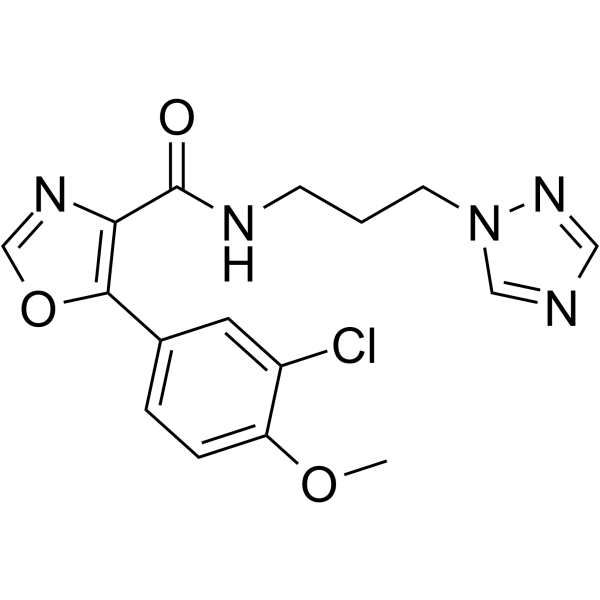
- HY-161649
-
|
|
Cytochrome P450
Aryl Hydrocarbon Receptor
|
Cancer
|
|
hCYP1B1-IN-2 (compound 3n) is a potent human cytochrome P450 1B1 enzyme hCYP1B1 inhibitor. hCYP1B1-IN-2 shows the extremely potent anti-hCYP1B1 activity (IC50=0.040 nM) and blocks AhR transcription activity. hCYP1B1-IN-2 potently inhibits hCYP1B1 via a mix inhibition manner, showing a Ki value of 21.71 pM .
|
-

-
-
HY-L044
-
|
|
513 compounds
|
|
Nucleoside and nucleotide analogues are synthetic, chemically modified compounds that have been developed to mimic their physiological counterparts in order to exploit cellular metabolism and subsequently be incorporated into DNA and RNA to inhibit cellular division and viral replication. In addition to their incorporation into nucleic acids, nucleoside and nucleotide analogues can interact with and inhibit essential enzymes such as human and viral polymerases (that is, DNA-dependent DNA polymerases, RNA-dependent DNA polymerases or RNA-dependent RNA polymerases), kinases, ribonucleotide reductase, DNA methyltransferases, purine and pyrimidine nucleoside phosphorylase and thymidylate synthase. These actions of nucleoside and nucleotide analogues have potential therapeutic benefits — for example, in the inhibition of cancer cell growth, the inhibition of viral replication as well as other indications.
MCE offers a unique collection of 513 nucleotide compounds including nucleotide, nucleoside and their structural analogues. MCE Nucleotide Compound Library is a useful tool to discover anti-cancer and antiviral drugs for high throughput screening (HTS) and high content screening (HCS).
|
-
-
HY-L130
-
|
|
601 compounds
|
|
Non-steroidal anti-inflammatory drugs (NSAIDs) are members of a therapeutic drug class with potent anti-inflammatory, analgesic and antipyretic activity, and are among the most widely used drugs worldwide. The most prominent NSAIDs are aspirin, ibuprofen, and naproxen.
The main mechanism of action of NSAIDs is the inhibition of the enzyme cyclooxygenase (COX), based on which NSAIDs can be classified into two types: non-selective and COX-2 selective. Most NSAIDs are non-selective and inhibit both COX-1 and COX-2 activity.
MCE offers a unique collection of 601 non-steroidal compounds with identified anti-inflammatory activity. MCE non-steroidal anti-inflammatory library is a useful tool for the study of anti-inflammatory drugs and pharmacology.
|
-
-
HY-L067
-
|
|
659 compounds
|
|
Antibiotics are types of antimicrobial products used for the treatment and prevention of bacterial infections. Antibiotics can kill or inhibit bacterial growth. Although the target of an antibiotic is bacteria, some antibiotics also attack fungi and protozoans. However, antibiotics rarely have an effect on viruses. The major mechanism underlying antibiotics is the inhibition or regulation of enzymes involved in cell wall biosynthesis, nucleic acid metabolism and repair, protein synthesis, or disruption of membrane structure. Many of these cellular functions targeted by antibiotics are most active in multiplying cells. Since there is often overlap in these functions between prokaryotic bacterial cells and eukaryotic mammalian cells, it is not surprising that some antibiotics have also been found to be useful as anticancer agents.
MCE supplies a unique collection of 659 antibiotics, including penicillins, cephalosporins, tetracyclines, macrolides, etc. MCE Antibiotics Library is a useful tool for anti-bacterial or anti-cancer drugs discovery.
|
| Cat. No. |
Product Name |
Type |
-
- HY-P2802
-
|
α-D-Glucosidase
|
Biochemical Assay Reagents
|
|
α-Glucosidase (α-D-Glucosidase), a carbohydrate hydrolyzing enzyme, catalyzes the liberation of α-glucose from the non-reducing end of the substrate. α-Glucosidase can facilitate the absorption of glucose by the small intestine. Inhibition of α-Glucosidase is an effective management of non-insulin-dependent diabetes mellitus (NIDDM) .
|
| Cat. No. |
Product Name |
Target |
Research Area |
-
- HY-W011258
-
|
L-Tyrosyl-L-phenylalanine
|
Xanthine Oxidase
Angiotensin-converting Enzyme (ACE)
|
Inflammation/Immunology
Cancer
|
|
H-Tyr-Phe-OH (L-Tyrosyl-L-phenylalanine) is an orally active inhibitor of Angiotensin converting enzyme (ACE), with an inhibiton rate of 48% at 50 μM. H-Tyr-Phe-OH can be used as an biomarker for differentiating benign thyroid nodules (BTN) from thyroid cancer (TC). H-Tyr-Phe-OH exhibits xanthine oxidase inhibition (uric acid lowering) activity and serves as regulator in IL-8 production in neutrophil-like cells .
|
-
- HY-P4594
-
|
|
Peptides
|
Others
|
|
Z-Phe-His-Leu is the substrate of plasma converting enzyme, with enhanced discriminating power at peak converting enzyme inhibition .
|
-
- HY-P10244F
-
|
|
Peptides
|
Infection
|
|
Biotin-YVAD-FMK is an inhibitor for vacuolar processing enzyme (VPE), with a 64% inhibition at 5 μM. Biotin-YVAD-FMK is an irreversible substrate for caspase 1 .
|
-
- HY-P10346
-
|
Smooth-Muscle Myosin Light-Chain Kinase (796-815)
|
Peptides
|
Cardiovascular Disease
Inflammation/Immunology
|
|
smMLCK peptide is a specific inhibitor of smooth muscle myosin light chain kinase (smMLCK). The smMLCK peptide mimics the substrate and competitively inhibits the binding of the actual substrate to the enzyme, thereby inhibiting the kinase activity. This inhibition prevents the phosphorylation of the myosin light chain, thus inhibiting muscle contraction .
|
| Cat. No. |
Product Name |
Category |
Target |
Chemical Structure |
| Cat. No. |
Product Name |
Chemical Structure |
-
- HY-76200S
-
|
|
|
Voriconazole-d3 is the deuterium labeled Voriconazole. Voriconazole (UK-109496) is a second-generation, broad-spectrum triazole antifungal agent that inhibits fungal ergosterol biosynthesis. Voriconazole exerts its antifungal activity by inhibition of 14-α-lanosterol demethylation, which is mediated by fungal cytochrome P450 enzymes[1][2].
|
-

-
- HY-12390S
-
|
|
|
Lofepramine-d3 (Lopramine-d3) is the deuterium labeled Lofepramine. Lofepramine (Lopramine) is a potent tricyclic antidepressant and is extensively metabolised to Desipramine. The antidepressant activity of Lofepramine stems from the facilitation of noradrenergic neurotransmission by uptake inhibition. Lofepramine may also potentiate serotoninergic neurotransmission by inhibition of the neuronal uptake of serotonin and the enzyme tryptophan pyrrolase. Lofepramine has significant anxiolytic efficacy in addition to its antidepressant properties[1].
|
-

Your information is safe with us. * Required Fields.
Inquiry Information
- Product Name:
- Cat. No.:
- Quantity:
- MCE Japan Authorized Agent:


























































































